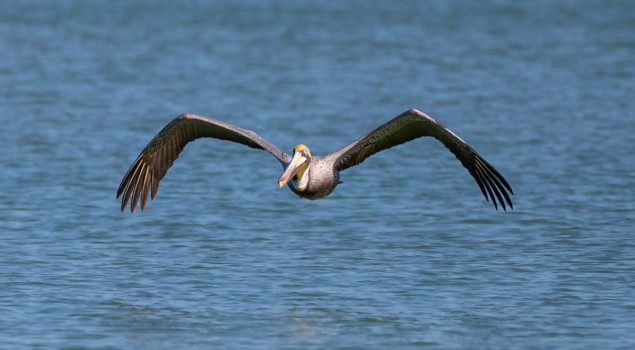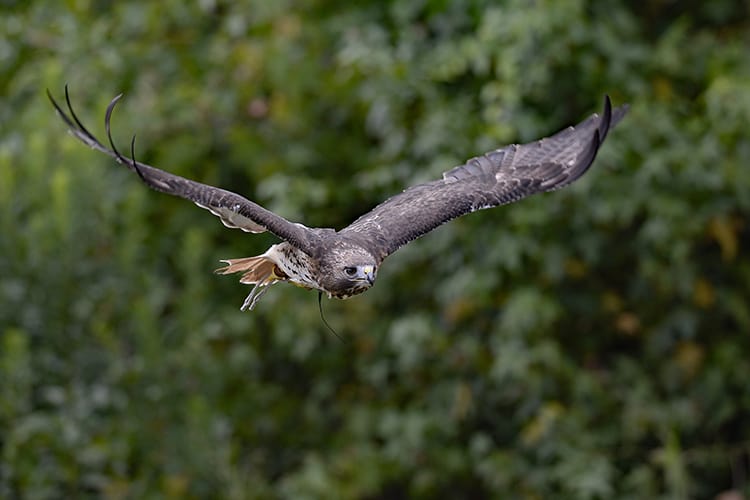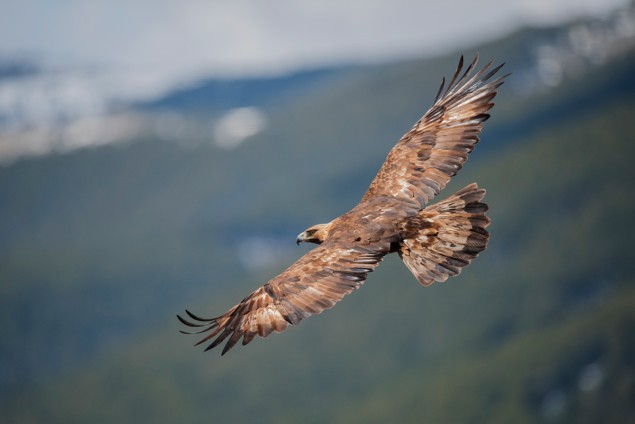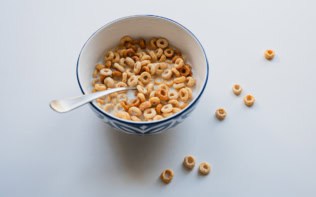
For human-built aircraft, turbulence is an old and knotty problem. One of the first recorded human flight attempts, by an 11th-century monk called Eilmer, ended when his birdlike wood-and-leather wings couldn’t handle what the chronicler calls “the violence of the wind and the swirling of air”. A thousand years later, the same phenomenon continues to bedevil the aerospace industry, racking up costs in lost fuel, lost lunches, lost missions and even lost lives.
Curiously, though, the birds that inspired Eilmer seem to cope with turbulence just fine. Indeed, some birds actually exploit it, using the energy in unstable air currents to keep themselves aloft.
In a series of talks at last month’s annual meeting of the American Physical Society’s Division of Fluid Dynamics, an international lineup of speakers offered clues to how birds handle flying conditions that challenge modern aircraft – never mind intrepid medieval monks. Among the speakers was Cyprien de Sepibus, a PhD student at the EPFL in Switzerland who is studying pelican flight. Pelicans are often seen gliding just above the surface of water, and researchers have long assumed they must be taking advantage of a well-known phenomenon called ground effect to reduce the energy they need to stay aloft.
The problem with this assumption, de Sepibus explained, is that when pelicans approach the water, they turn their wingtips down (see photo above). This change forces the wing into a pronounced arch, leaving most of it too far away for ground effect to kick in. But if pelicans aren’t exploiting ground effect, why do they bother repositioning their wingtips? “It must be for a reason,” de Sepibus said.
To find out what that reason is, de Sepibus and colleagues turned to a tried-and-tested tool of fluid dynamics research: a wind tunnel. After testing several wing shapes in the tunnel, they found that a dipped (anhedral) shape provides the most lift when mounted on a ground-simulating fixed plate. This result is suggestive, de Sepibus said, but also limited because the set-up does not capture all the possible interactions between the wing and the water surface. He and his supervisor Flavio Noca are therefore performing follow-up experiments that involve towing model wings over the surface of a long, narrow tank of water. Their preliminary observations indicate that different wing types deform the water’s surface in different ways, suggesting that pelicans may be exploiting more complicated effects.
Red-tailed hawks handle turbulence with ease…

de Sepibus’ towing tank was not the only inventive experimental technique on show in the session. To study how pigeons change the pitch of their tails when they land, Ariane Gayout and her colleagues at the University of Groningen, Netherlands, built a “biohybrid” tail out of real pigeon feathers and stuck it in a wind tunnel. To study how air flows around bat wings in flight, Chintan Panigrahi and colleagues at Johns Hopkins University, US, employed a similar technique with a real, dissected bat wing (from a bat that died of natural causes, he hastened to note).
The top prize for experimental realism, though, went to researchers who study raptors. Rather than focusing on model birds or pieces of real ones, Vrishank Raghav of Auburn University persuaded an actual red-tailed hawk called Petey to fly over a bank of upward-facing fans. This scenario is important because flapping-wing drones deal with this type of turbulence very badly; in his talk, Raghav showed a video of one crashing pathetically after just a few seconds. Petey, though, handled the sudden updraft with aplomb. “The bird flies through it like nothing happened,” Raghav explained.
Based on data from four high-speed cameras that tracked 10 points on Petey throughout each test flight, Raghav and colleagues think the bird’s primary way of mitigating gusts is wing pitch. However, their flight dynamics model still can’t predict Petey’s flight path at high “gust ratios” (that is, when the wind speed is much higher than the bird’s flying speed)
Working with a real live animal also brings challenges as well as advantages. “There’s a lot of entropy in these experiments,” Raghav told Physics World. Because Petey would only fly if offered food, the researchers could only do six test flights per day. On some days they would get everything set up and calibrated only for Petey to decide he wasn’t interested. Worse, Petey developed a disconcerting ability to predict when he was about to face a high gust ratio, despite the team’s best efforts at randomizing the fan speeds. “We believe the bird has learned,” Raghav said ruefully.
…and golden eagles exploit it

A final talk in the series ventured still further into real-world bird flight. To understand how birds handle turbulence in the wild, Greg Bewley and colleagues at Cornell University, US attached GPS-enabled accelerometers to the backs of six golden eagles and collected data on their natural flight.
Based on the transmitted accelerometer data, Bewley and his team created a probability distribution of the differences in the eagles’ vertical accelerations. When they matched this data with the birds’ GPS-determined locations and weather records, they found long “tails” in the probability distribution consistent with the eagles amplifying, rather than suppressing, strong intermittent upward gusts. Though Bewley claimed that theirs is the first evidence of birds taking advantage of turbulence, he suggested it wasn’t entirely a surprise. “This [turbulence] is something these animals have evolved to move in,” he told the audience.

Why peregrine falcons wear eyeliner, golden eagles could accelerate using turbulence
Unfortunately, the nature of the study didn’t allow Bewley and colleagues to explore how the eagles are doing this. (“We have no way of discriminating between different kinds of behaviour the bird is exhibiting,” he noted.) That said, they think the eagles might be pushing down on updrafts and venting the downdrafts through their feathers – a dynamic and asymmetric response that human-built aircraft cannot yet mimic. Maybe Eilmer the monk didn’t do so badly after all.



